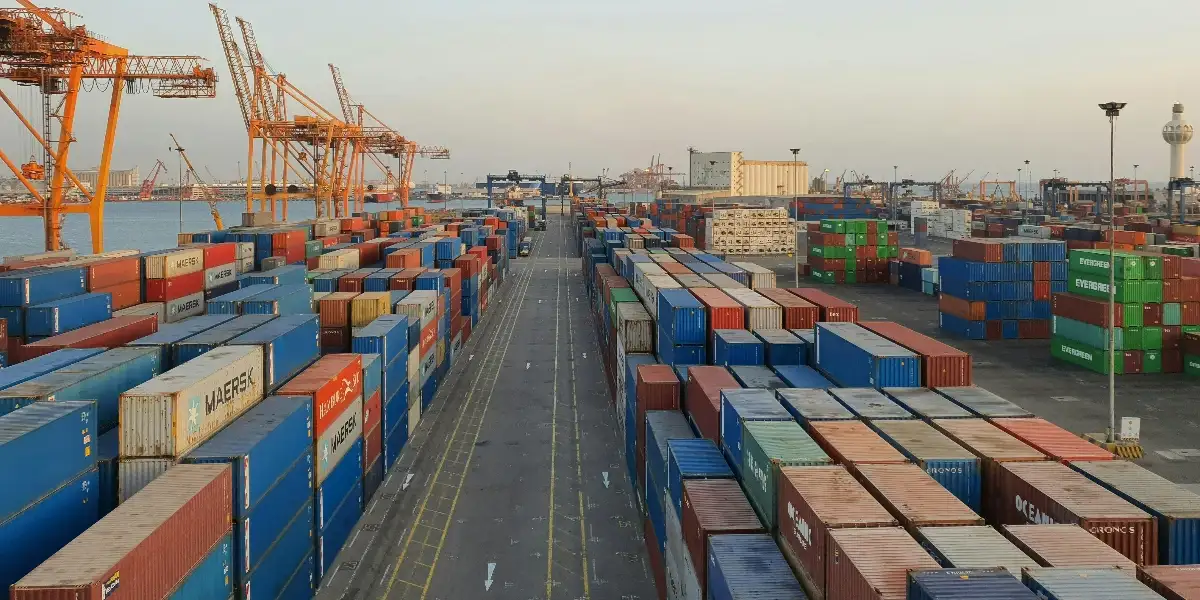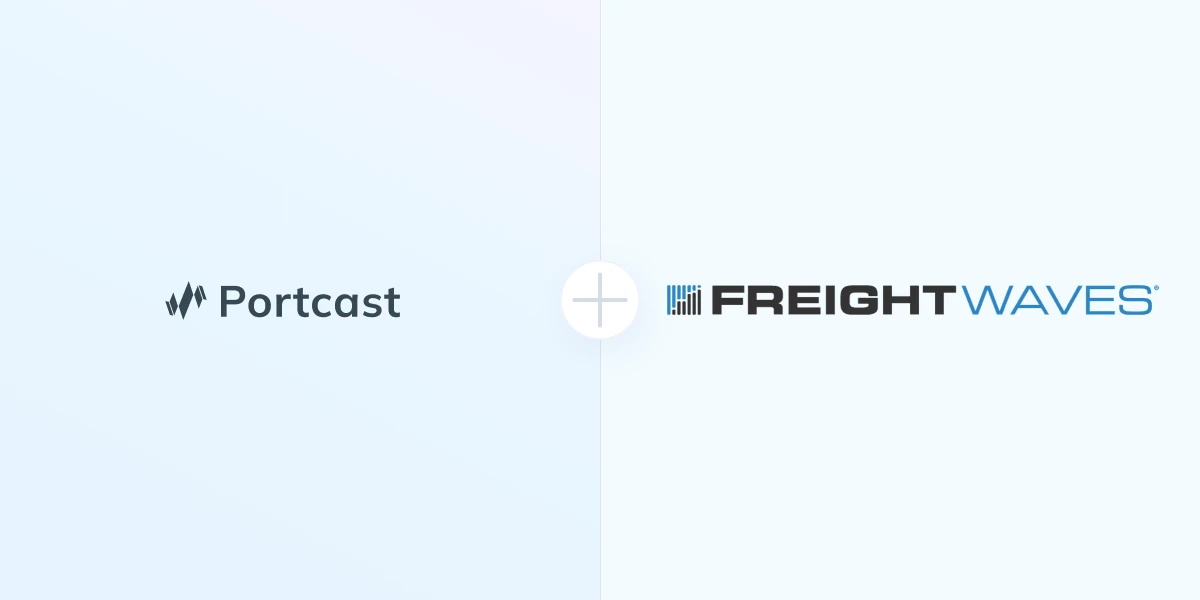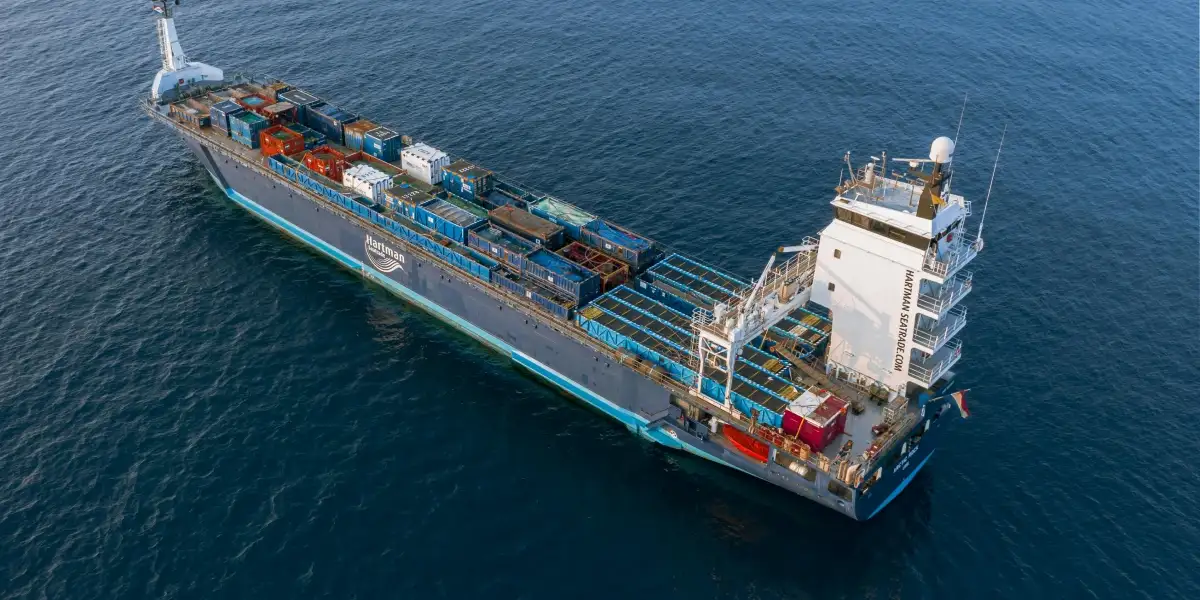1. What Is Supply Chain Visibility Software?
Supply chain visibility software is a powerful digital tool that provides real-time or near-real-time insights into various aspects of a company's supply chain. It enables organisations to track and monitor the movement of freight and provides critical data points throughout the entire supply chain network, from suppliers to customers.
Key features of supply chain visibility software include:
- Container Tracking: The software enables real-time container tracking, allowing organisations to monitor the precise location of their containers throughout their journey.
- Predictive Visibility: It offers predictive visibility through dynamic estimated time of arrivals (ETAs), which are often more reliable than carrier-provided ETAs.
- Terminal Milestone Insights: It provides detailed insights into terminal milestones, which are typically blind spots in a container's journey.
- Data-Driven Analytics: The software offers detailed analytics for data-driven decision-making, enabling businesses to identify trends, bottlenecks, and opportunities for improvement.
- Exception Handling: It handles exceptions through real-time alerts, allowing organisations to proactively address issues and minimise supply chain disruptions.
2. Is Supply Chain Visibility Software Suitable for All Types of Businesses, Even SMEs?
Indeed, supply chain visibility software is well-suited for businesses of every size, including Small and Medium-sized Enterprises (SMEs). While Beneficial Cargo Owners (BCOs) and global freight forwarders may operate more intricate supply chains, and thus the scale of implementation may vary, SMEs can benefit as much from supply chain visibility software by tailoring it to their specific needs. The solution can help SMEs enhance operational efficiency, cut costs, and improve customer satisfaction by offering valuable insights and real-time monitoring capabilities within their supply chains.
Supply chain visibility software is versatile and applicable to a range of businesses, including:
- Large enterprises or BCOs
- Small and Medium-sized Enterprises (SMEs)
- Freight forwarders
3. When Should I Opt for Supply Chain Visibility Software, and How Will It Benefit My Business?
It would be best if you considered opting for supply chain visibility software when you see the following drivers for your business:
- Complexity and Scale: Your supply chain operations have grown in complexity or scale, making it challenging to track your shipments manually.
- Customer Expectations: Your customers are demanding accurate delivery times, transparency, and real-time updates, and you need to meet these expectations to stay competitive.
- Cost Reduction: You aim to reduce operational costs, minimise inventory holding costs, and optimise resource allocation within your supply chain.
- Risk Mitigation: To minimise their impact on your business, you want to proactively identify and address potential disruptions, such as port congestion or weather-related delays.
- Data-Driven Decision Making: You seek to make data-driven decisions by analysing supply chain data and trends for improved planning and performance.
Benefits: Opting for supply chain visibility software translates to operational excellence, decreasing operating costs and avoiding delay-related charges. Moreover, it offers better visibility into potential disruptions, fostering greater customer confidence and reducing reputational risks. The supply chain visibility software gives your business a competitive edge by providing data-driven insights, ensuring you stay at the forefront of your industry.
4. Are There Cloud-Based and On-Premises Options for Supply Chain Visibility Software? Which One Is Better?
Absolutely! There are both cloud-based and on-premise supply chain visibility software options. The choice between the two depends on your specific business needs and preferences.
Cloud-Based: Cloud-based supply chain visibility software is hosted and managed off-site by the solution provider. It offers advantages such as scalability, accessibility from anywhere with an internet connection, and lower upfront costs. It's often a better choice for businesses that want flexibility and rapid deployment without the burden of maintaining on-site infrastructure. Moreover, it is cost-effective as companies pay for what they use.
On-Premises: On-premises supply chain visibility software is installed and maintained on your company's own servers and infrastructure. It provides more control over your data and may be preferred by organisations with strict data security or compliance requirements. However, it typically involves higher upfront costs and greater responsibility for maintenance.
Neither option is inherently better; it depends on your budget, IT infrastructure, data security needs, and scalability requirements.
5. Can Supply Chain Visibility Software Integrate with My Existing Systems and Those of My External Partners and Suppliers? Who Is Responsible for the Integration?
Yes, supply chain visibility software offers seamless integration with your current systems and those of external partners and suppliers through robust API integration capabilities. This integration fosters effortless data sharing and collaboration across the extended supply chain network.
The integration process may involve your IT department or software implementation team working closely with the software provider to ensure compatibility and smooth data exchange. It's essential to discuss integration capabilities and responsibilities with your chosen software provider during the implementation process. Many providers offer support and tools to facilitate smoother integration and ensure a successful setup.
6. What Data Sources Do These Supply Chain Visibility Software Solutions Use to Provide Real-Time Data to Their End Users? How Is This Data Validated for Accuracy?
Supply chain visibility software uses GPS technology in containers transmitting the real-time location, and sources data from shipping carriers and ports/terminals through secure EDIs (Electronic Data Interchange) or APIs (Application Programming Interface). The software also uses real-time weather, routes, schedules, risk incidents and traffic information to anticipate potential delays or disruptions.
As for data accuracy, achieving this relies on the platform's proprietary algorithms and the quality of its data processing systems. For instance, Portcast employs intelligent data validations and human-in-the-loop quality experts to ensure reliable data. This combination allows for meticulous data verification, ensuring the tracking information presented is accurate, reliable, and consistent.
7. What Type of Analytics and Data Insights Can Be Expected from a Global Supply Chain Visibility Software Solution?
Some of the key types of analytics and data insights you can expect include:
- Predictive Analytics: Predictive analytics can forecast future demand based on historical data. This helps businesses plan inventory levels and production schedules more effectively.
- Performance Analytics Key performance indicators (KPIs) such as on-time delivery rates and lead times help assess carrier reliability.
- Lane Analytics: Lane analytics can identify the less risky, cost-effective trade routes and highlight high-risk routes susceptible to delays.
- Cost Analytics: Detailed cost analytics can uncover cost-saving opportunities and areas where expenses can be minimised.
- Risk Analytics: Analysing historical and real-time data can help identify and mitigate supply chain risks, such as disruptions in the transportation network.
8. Can Supply Chain Visibility Software Predict Supply Chain Disruptions? How Will I/My Team Be Alerted When Disruptions Occur So That Quick Actions Can Be Taken?
Yes, supply chain visibility software can help predict and identify potential supply chain disruptions. It employs various methods and data sources to anticipate issues and typically provides alerts and notifications to ensure timely action. Some advanced systems use machine learning algorithms to detect patterns and anomalies that could lead to disruptions.
Alerts and Notifications:
- Real-Time Alerts: When the software detects a potential disruption, it sends real-time alerts to designated individuals or teams. These alerts can be delivered through email, SMS, or within the software dashboard.
- Customised Alerts: You can set up customised alert thresholds and criteria based on your specific supply chain needs. For example, you can receive alerts for delayed shipments, container rollovers, transhipment port delays, congestion alerts, pre-arrival notices, etc.
Alerts often come with actionable insights or recommendations, helping you or your team make informed decisions on mitigating or responding to the disruption.
9. What Security Measures Exist in Supply Chain Visibility Software for Handling Sensitive Supply Chain Data?
A reliable supply chain visibility software typically employs robust security measures to safeguard sensitive supply chain data. These measures include:
- Data encryption protocols
- Role-based access control (RBAC) and user authentication
- Secure APIs
- Network security measures like firewalls
- Regular security updates
- Compliance with the S-SDLC framework and certifications such as ISO 27001
10. How Customisable Is Supply Chain Visibility Software for Different Industries?
Supply chain visibility software solutions are designed with flexibility in mind, and most providers often give the option to create customised dashboards that showcase the most pertinent data and key performance indicators (KPIs) specific to your daily operations. The extent of customisation can differ based on the software provider and the chosen solution.
11. Can Supply Chain Visibility Software Adapt and Scale Effectively as My Business Experiences Growth and Increased Demands?
Yes, supply chain visibility software is typically designed to be scalable to accommodate your business's growth and offer:
- Increased capacity that can handle larger volumes of shipment data and users without significant performance degradation.
- Additional features allowing you to add new capabilities as your business requirements change.
- Expanded integrations that can integrate with more systems and data sources to support your growing supply chain ecosystem.
- Cost-effective growth that helps increase resources or features incrementally rather than investing in a complete system overhaul.
The scalability and flexibility of many supply chain visibility solutions make them accessible and beneficial for businesses of varying sizes.
12. What Is the Typical Timeline for Implementing and Fully Deploying Supply Chain Visibility Software Within a Business?
The implementation timeline for supply chain visibility software can vary widely depending on the complexity of your supply chain. However, a typical implementation can generally range from a few days to a month at most.
For simpler deployments with fewer customisations and integrations, it may be possible to get the software up and running in a matter of days. The process can take a few weeks in more complex scenarios, requiring extensive data integration, customisation, and training.
13. What Type of Training and Support Options Are Typically Provided with Supply Chain Visibility Software?
The level of training and support can vary between software providers, so it's important to discuss these offerings during the selection process. However, most providers offer the following:
- Onboarding training: Initial training sessions to familiarise users with the software's features, interface, and basic functionality.
- Documentation: Comprehensive user manuals, guides, and documentation to serve as user references.
- Online resources: Access to online knowledge bases and FAQs where users can find answers to common questions.
- Software updates: Regular updates and patches to ensure the software remains up-to-date and secure.
- Account manager: A dedicated account manager who can address technical issues and provide ongoing support, guidance, and insights into optimising your use of the software.
14. How Do Companies Measure the ROI of Implementing Supply Chain Visibility Software?
To start with, most companies;
- Assess the reduction in operational costs, such as improved inventory management and decreased transportation expenses.
- Calculate the savings generated by optimising inventory levels and reducing carrying costs.
- Measure efficiencies in supply chain processes, like reduced lead times and faster order fulfilment.
- Monitor improvements in customer satisfaction, loyalty, and retention due to transparency and on-time deliveries.
- Measure time saved in manual tracking processes, administrative tasks, and issue resolution.
- Assess the value of avoiding supply chain disruptions, such as penalties and costly delays.
In the long term, companies measure the benefits of making informed decisions based on data insights, which can lead to more profitable strategies.
15. What Should I Keep in Mind When Choosing the Most Suitable Supply Chain Visibility Software for My Business Operations?
This question is paramount for most businesses, and we've taken the initiative to simplify your decision-making process. We've thoughtfully compiled a checklist designed to assist you in evaluating and comparing the best supply chain visibility software/ container tracking platform, ensuring the success of your supply chain operations.







